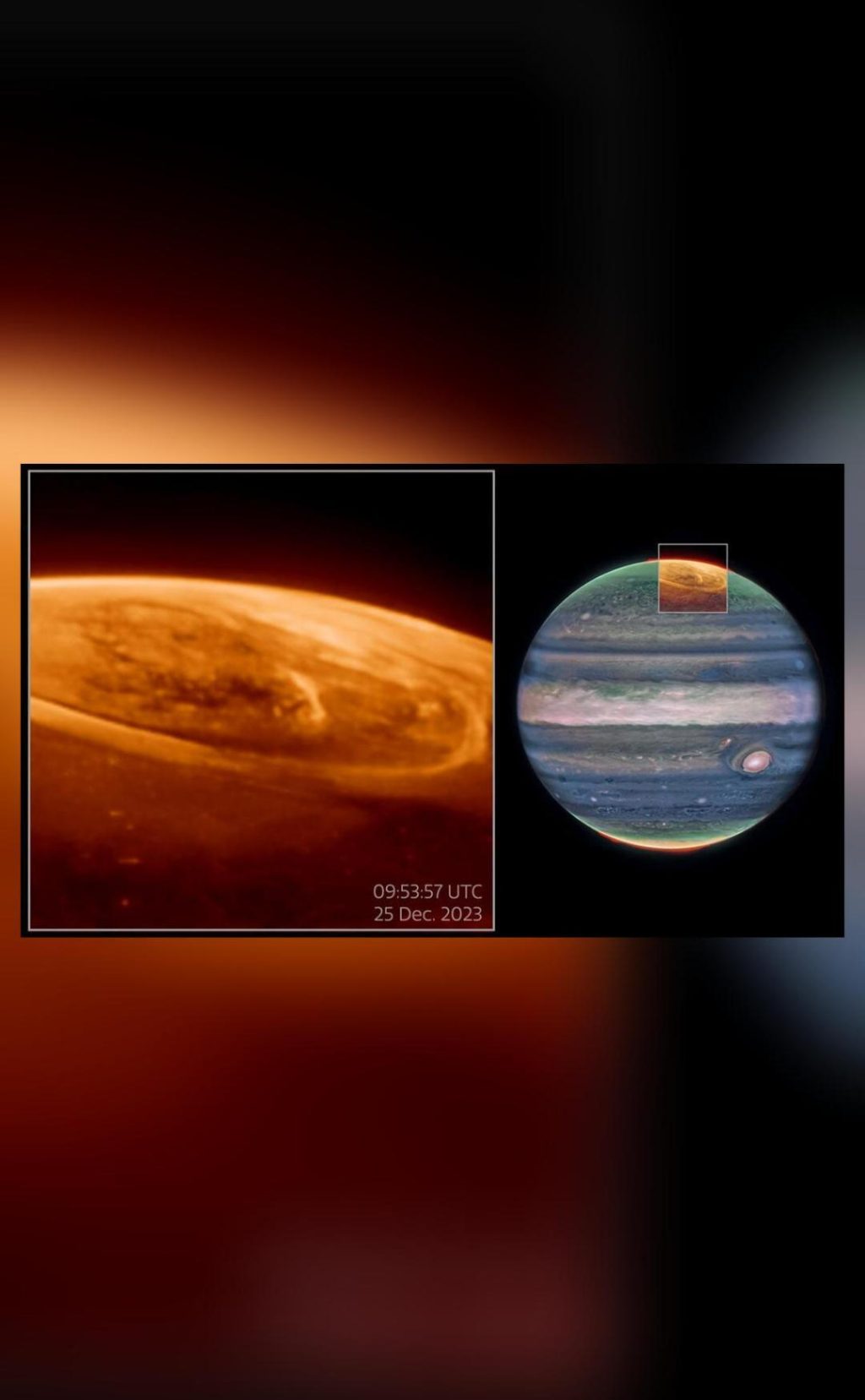
NASA Captures Auroras on Jupiter 100x Brighter than Those on Earth
The wonders of our solar system never cease to amaze us. NASA’s James Webb Space Telescope has recently captured stunning images of auroras on Jupiter, which are hundreds of times brighter and more energetic than those observed on Earth. The telescope’s incredible sensitivity has allowed astronomers to capture the fast-varying auroral features on the gas giant, revealing new details and mysteries about the planet’s magnetic field and atmosphere.
Auroras, also known as northern or southern lights, occur when charged particles from the sun interact with the Earth’s magnetic field and atmosphere. On Jupiter, the process is similar, but on a much larger scale. The gas giant’s strong magnetic field and powerful storms create an environment where charged particles from the solar wind can collide with the planet’s atmosphere, producing spectacular displays of light.
The auroras on Jupiter are massive, stretching across thousands of kilometers of the planet’s atmosphere. They are also incredibly bright, with intensities hundreds of times greater than those observed on Earth. This is due to Jupiter’s much stronger magnetic field and the fact that the planet’s atmosphere is mostly composed of hydrogen and helium, which are more efficient at absorbing and emitting energy.
The new images captured by the James Webb Space Telescope show the auroras in unprecedented detail, revealing complex structures and dynamics that were previously unknown. The telescope’s advanced infrared cameras and spectrographs have allowed astronomers to study the auroras in multiple wavelengths, revealing information about the composition and temperature of the atmosphere.
The images show vast swaths of colorful light dancing across Jupiter’s atmosphere, with bright, swirling patterns and wispy tendrils of light. The colors vary depending on the energy of the particles involved and the altitude at which they collide with the atmosphere. The most intense auroras are characterized by bright, red-orange colors, while the less intense ones appear as soft, blueish hues.
The auroras on Jupiter are also much more dynamic than those on Earth, with fast-moving features and rapid changes in intensity and color. This is because Jupiter’s magnetic field is much stronger and more complex than the Earth’s, creating a more turbulent and dynamic environment.
The James Webb Space Telescope’s observations of Jupiter’s auroras have shed new light on the planet’s magnetic field and atmosphere. The data collected by the telescope have revealed the presence of previously unknown features, such as a “ring” of charged particles around the planet’s equator and a “tail” of particles extending into space.
The findings have also provided new insights into the formation and evolution of Jupiter’s magnetic field and atmosphere. The data suggest that the planet’s magnetic field is much stronger than previously thought, and that it plays a crucial role in shaping the planet’s atmosphere and controlling the auroras.
The James Webb Space Telescope is an international collaboration between NASA, the European Space Agency, and the Canadian Space Agency. The telescope was launched in December 2021 and has been operating in space since January 2022. Its primary mission is to study the formation of the first stars and galaxies in the universe, but it has also been used to study the atmospheres and magnetic fields of the planets in our solar system.
In conclusion, the James Webb Space Telescope’s observations of Jupiter’s auroras have revealed new details and mysteries about the planet’s magnetic field and atmosphere. The stunning images and data collected by the telescope have provided a unique glimpse into the dynamic and complex environment of the gas giant, and have shed new light on the formation and evolution of the planet’s magnetic field and atmosphere.
Source:
https://science.nasa.gov/missions/webb/nasas-webb-reveals-new-details-mysteries-in-jupiters-aurora/






